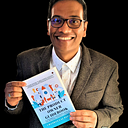Coaching Cloud Migration Team
With platforms like Netflix, things are evolving as they are making content-driven films and series. — Amyra Dastur
My Friend is an Architect and joined a fresh team who are working for Cloud migration.
I have asked him, what he would seek for to coach this team.
He was sharing that he will first find out the cloud migration strategy. If there are gaps, he will start helping the team to formulate this effectively.
According to Gartner, the worldwide spending on public-cloud services is forecast to grow up to $304.9 billion in 2021, up from $257.5 billion in 2020. By 2024, more than 45% of the IT spending will shift from traditional solutions to the cloud.
He has been seeking for all the below information.
- Diagnose why teams require to migrate to the cloud?
- What are the benefits a team can expect from cloud migration?
- What level of security and flexibility is required for the business?
- What is the flexibility of migration?
- What would be spending the expenditure, and are we ready to invest significant capital?
- What degree of cloud architecture are we looking for?
- Do we have an exhaustive list of all the applications and workloads we are running?
- What are the infrastructure costs per application?
- What services are offered by the vendors
- Is this vendor right for this job?
- Is Company data safe and protected with these vendors?
- How are those costs split by environment (productions vs. staging vs. dev)?
- What do we pay for cloud services?
- Which applications have no infrastructure costs associated with them?
- Which applications are we organizing to move?
- Are we optimizing our application to ensure we are curtailing costs in a pay-for-what-you-use cloud realm?
- Are those applications ready for the cloud?
- What are the prospective-state costs of each application in the cloud?
- Who is going to take care of the migration of applications and shutdown of resources (Product Team or Vendor)?
- What on-premises hardware requires to be maintained to support legacy apps that can’t be moved?
- What are the sunk costs from decommissioned on-premises assets?
- Are these assets still on a depreciation schedule? What is the plan for underutilized on-premises hardware still on a depreciation schedule?
- Which migration costs can be capitalized or delayed to subsequent periods?
- What type of database are we using?
- What type of load balancers are we using?
- What application servers and versions are we using?
- What operating system are we using?
- Is our application public facing?
- Is our application stateful or stateless?
- Is our application containerized?
- What are the current resource requirements of the servers?
- How is our workload variation?
- What are our logging and monitoring requirements?
- What is our current backup strategy?
- How do we build, package and deploy our application?
- What type of security services are we using?
- Where do we store application configuration details?
- What are the functions that we would like to automate?
- What is the Business Continuity and Disaster Recovery provision?
- What are the Disaster Recovery locations and the security measures available at these locations?
- Does the provider offer managed recovery, automated or manual?
- Will the cloud service provider allow us the flexibility to add controls of our own?
- Who will retain the rights to order additional services?
- What is the risk management plan of the cloud service provider?
- What is the governance structure that the cloud service provider suggests?
- What are the compliance requirements that the cloud service provider meets?
- Can the service provider perform a cloud readiness assessment for the product team?
- What are the technical requirements and interdependencies of our applications?
- What are the changed orders for the migration process?
- What is the success rate of the provider meeting the contractual requirements for cloud migration projects?
- What are the conditions under which product team can terminate the contract?
Cloud migration cost is increasing, how do we coach teams so that we can optimize this cost?
Look at this chart, pause and reflect for some moment. What message is this chart offering and how can we improve it? Your own actions and steps
Also, we need to talk about scaling the system,
“By 2025, we can expect the world to be completely digital. Paper books will be a thing of the past. Education will be delivered through analytics-based assessment tools and adaptive learning platforms.”- Osman Rashid
Coaching product team approach:
Without taking action nothing is going to take place and it will remain as theory and it will not transform our life until we take action to do something with this knowledge.
